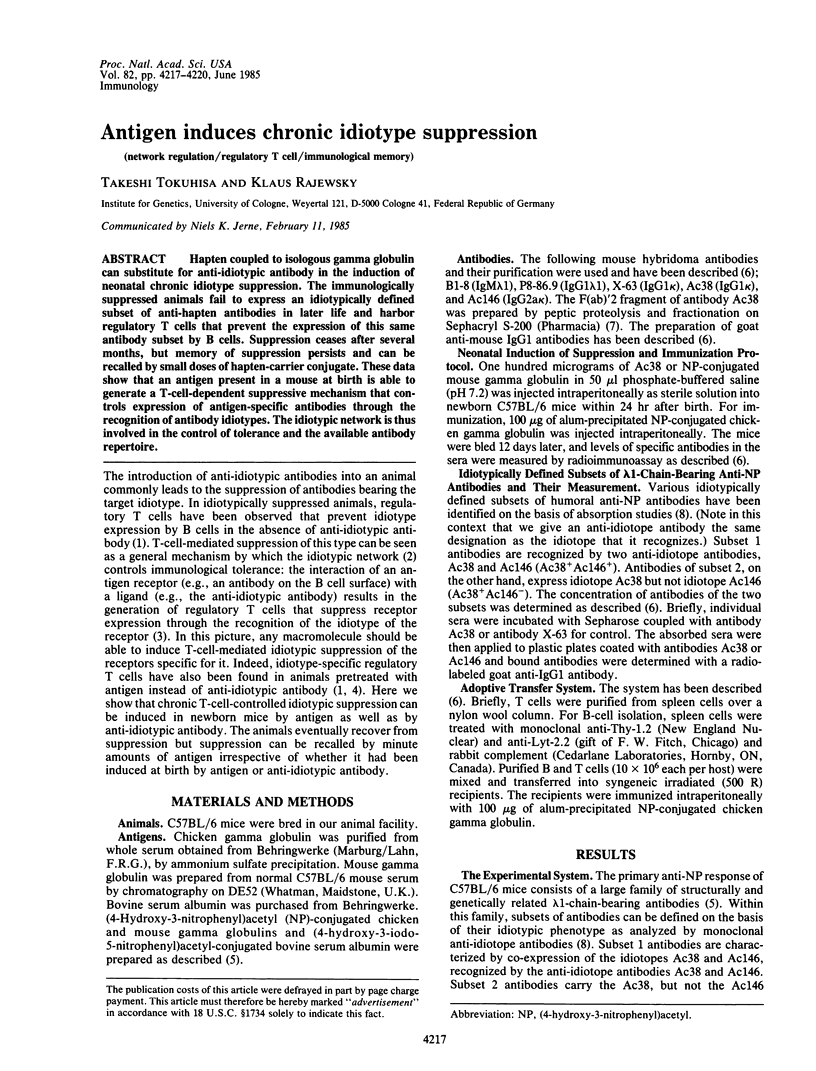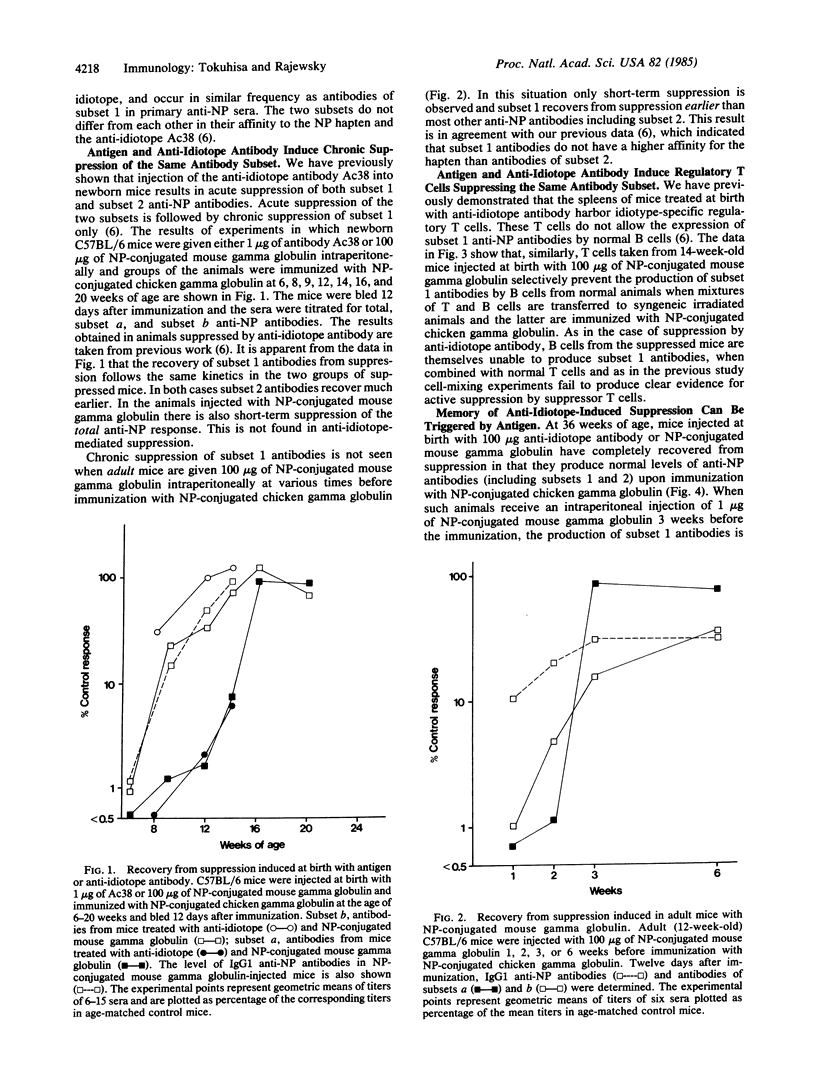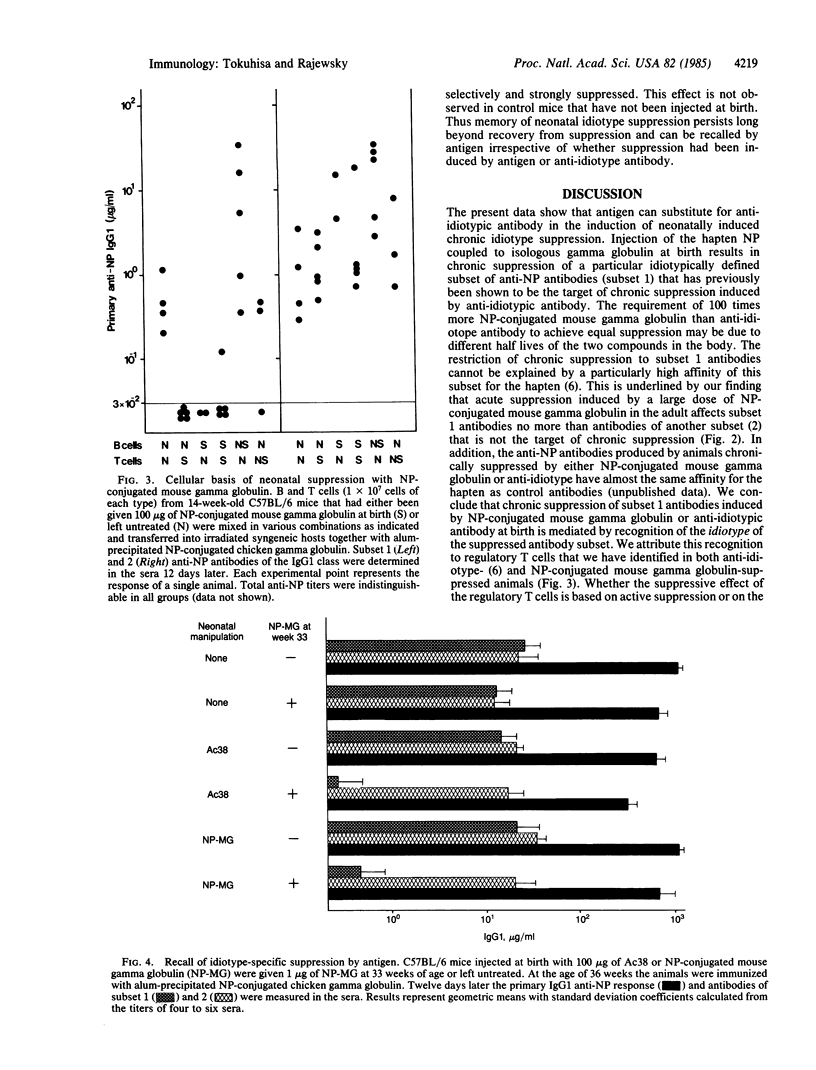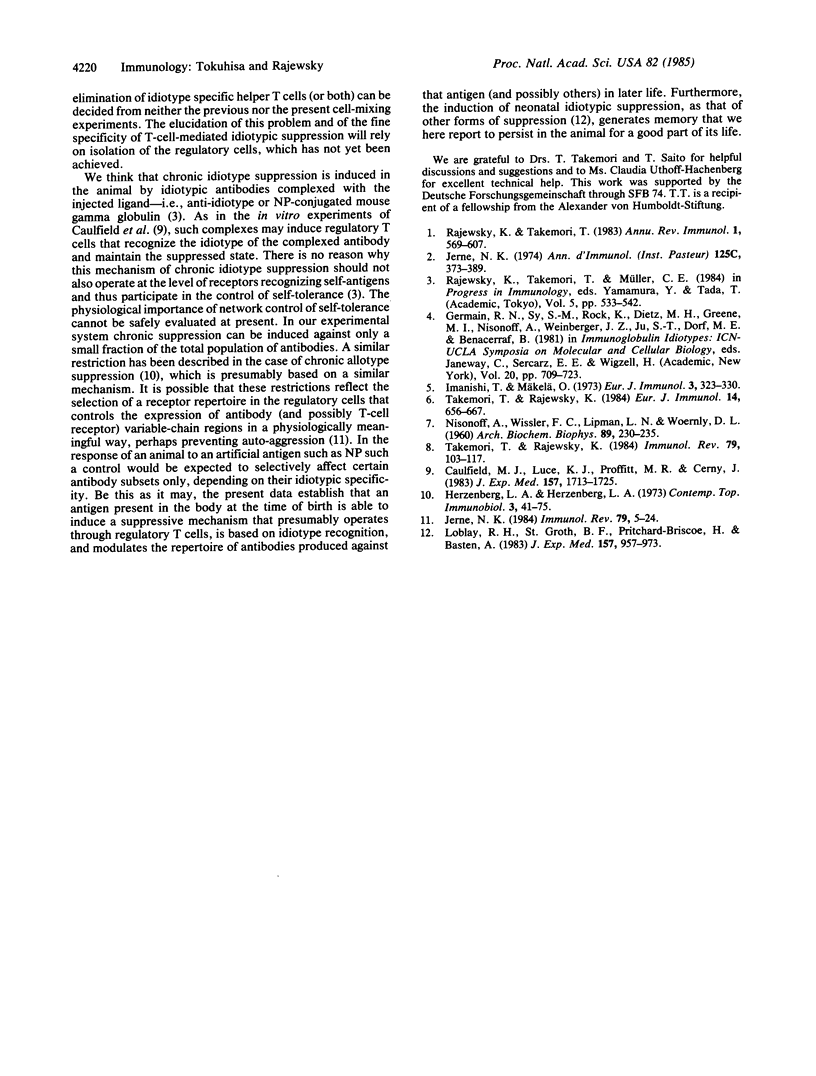Abstract
Hapten coupled to isologous gamma globulin can substitute for anti-idiotypic antibody in the induction of neonatal chronic idiotype suppression. The immunologically suppressed animals fail to express an idiotypically defined subset of anti-hapten antibodies in later life and harbor regulatory T cells that prevent the expression of this same antibody subset by B cells. Suppression ceases after several months, but memory of suppression persists and can be recalled by small doses of hapten-carrier conjugate. These data show that an antigen present in a mouse at birth is able to generate a T-cell-dependent suppressive mechanism that controls expression of antigen-specific antibodies through the recognition of antibody idiotypes. The idiotypic network is thus involved in the control of tolerance and the available antibody repertoire.
Full text
PDF



Selected References
These references are in PubMed. This may not be the complete list of references from this article.
- Caulfield M. J., Luce K. J., Proffitt M. R., Cerny J. Induction of idiotype-specific suppressor T cells with antigen/antibody complexes. J Exp Med. 1983 Jun 1;157(6):1713–1725. doi: 10.1084/jem.157.6.1713. [DOI] [PMC free article] [PubMed] [Google Scholar]
- Herzenberg L. A., Herzenberg L. A. Short-term and chronic allotype suppression in mice. Contemp Top Immunobiol. 1974;3:41–75. doi: 10.1007/978-1-4684-3045-5_2. [DOI] [PubMed] [Google Scholar]
- Imanishi T., Mäkelä O. Strain differences in the fine specificity of mouse anti-hapten antibodies. Eur J Immunol. 1973 Jun;3(6):323–330. doi: 10.1002/eji.1830030602. [DOI] [PubMed] [Google Scholar]
- Jerne N. K. Idiotypic networks and other preconceived ideas. Immunol Rev. 1984 Jun;79:5–24. doi: 10.1111/j.1600-065x.1984.tb00484.x. [DOI] [PubMed] [Google Scholar]
- Jerne N. K. Towards a network theory of the immune system. Ann Immunol (Paris) 1974 Jan;125C(1-2):373–389. [PubMed] [Google Scholar]
- Loblay R. H., Fazekas de St Groth B., Pritchard-Briscoe H., Basten A. Suppressor T cell memory. II. The role of memory suppressor T cells in tolerance to human gamma globulin. J Exp Med. 1983 Mar 1;157(3):957–973. doi: 10.1084/jem.157.3.957. [DOI] [PMC free article] [PubMed] [Google Scholar]
- NISONOFF A., WISSLER F. C., LIPMAN L. N., WOERNLEY D. L. Separation of univalent fragments from the bivalent rabbit antibody molecule by reduction of disulfide bonds. Arch Biochem Biophys. 1960 Aug;89:230–244. doi: 10.1016/0003-9861(60)90049-7. [DOI] [PubMed] [Google Scholar]
- Rajewsky K., Takemori T. Genetics, expression, and function of idiotypes. Annu Rev Immunol. 1983;1:569–607. doi: 10.1146/annurev.iy.01.040183.003033. [DOI] [PubMed] [Google Scholar]
- Takemori T., Rajewsky K. Mechanism of neonatally induced idiotype suppression and its relevance for the acquisition of self-tolerance. Immunol Rev. 1984 Jun;79:103–117. doi: 10.1111/j.1600-065x.1984.tb00489.x. [DOI] [PubMed] [Google Scholar]
- Takemori T., Rajewsky K. Specificity, duration and mechanism of idiotype suppression induced by neonatal injection of monoclonal anti-idiotope antibodies into mice. Eur J Immunol. 1984 Jul;14(7):656–667. doi: 10.1002/eji.1830140714. [DOI] [PubMed] [Google Scholar]


